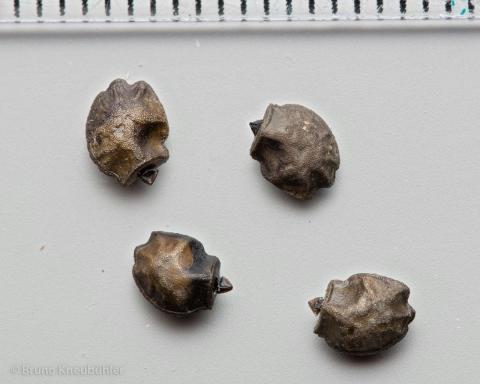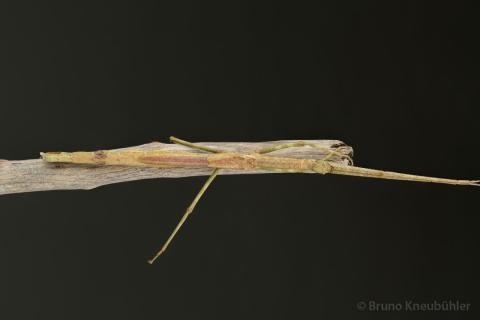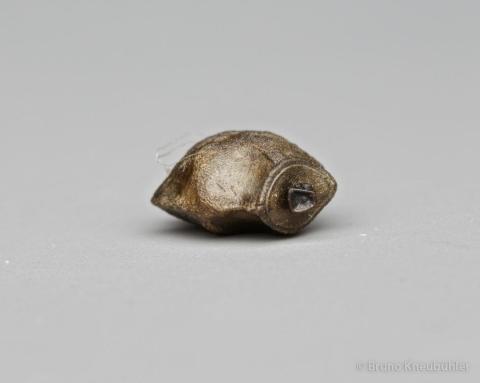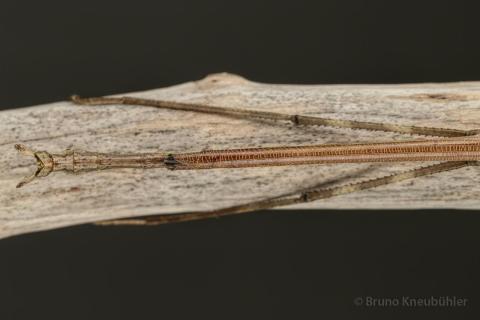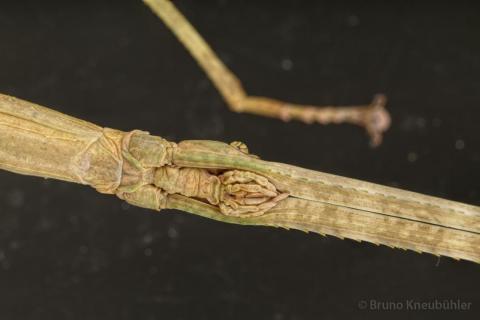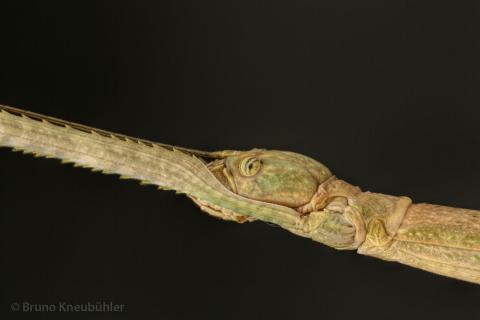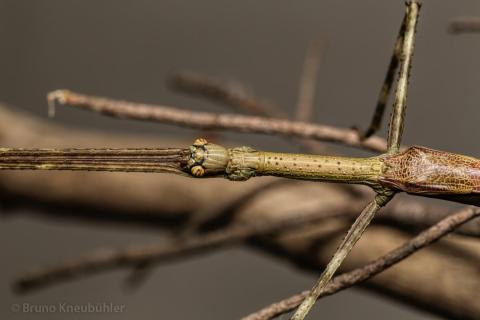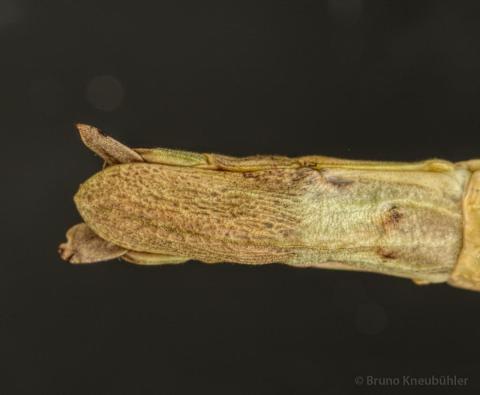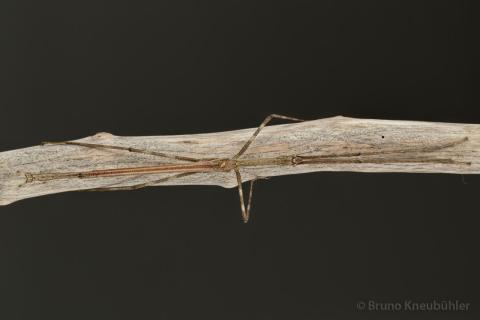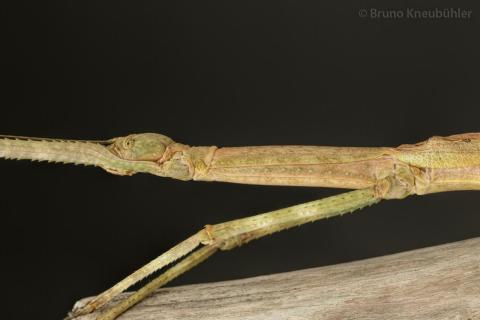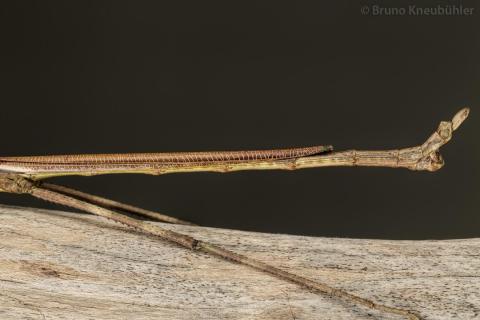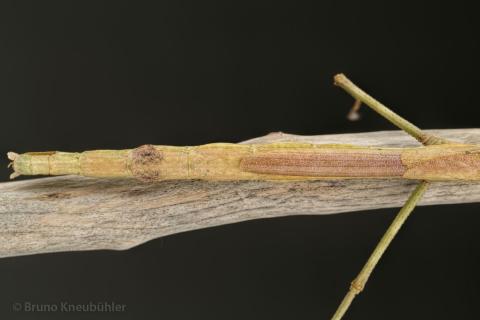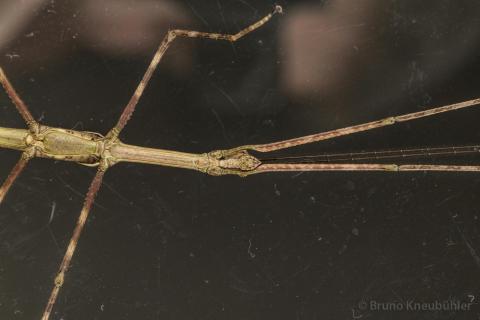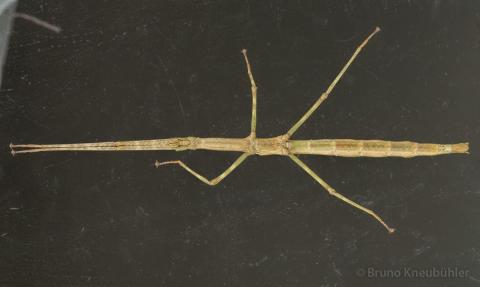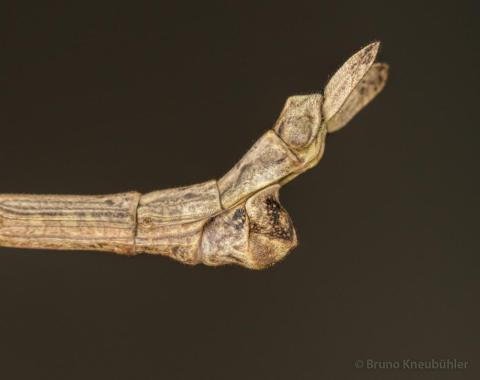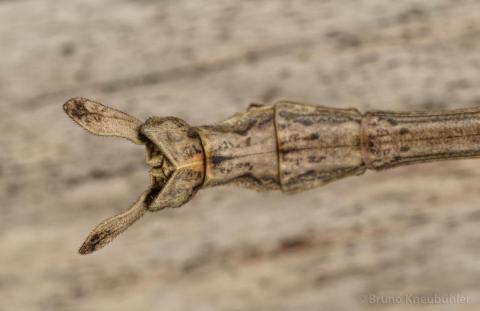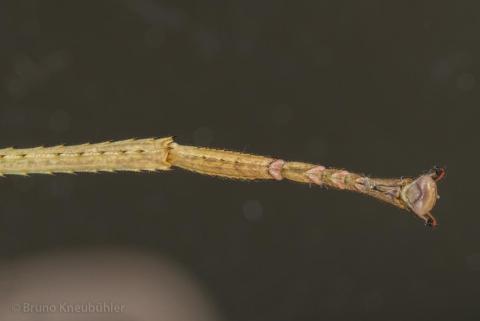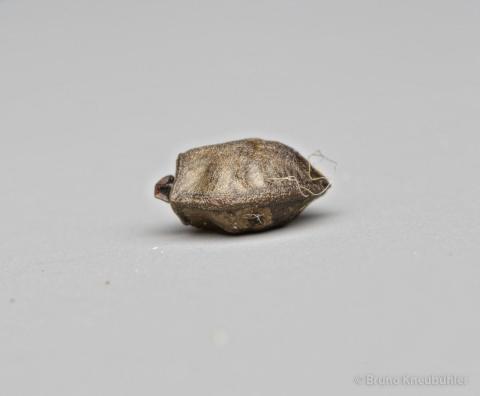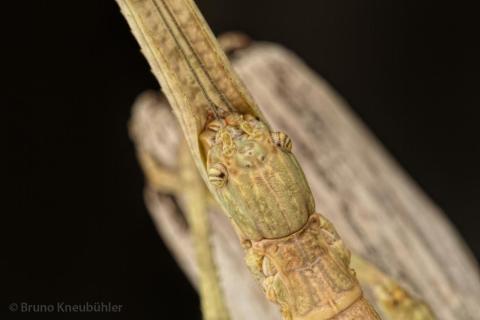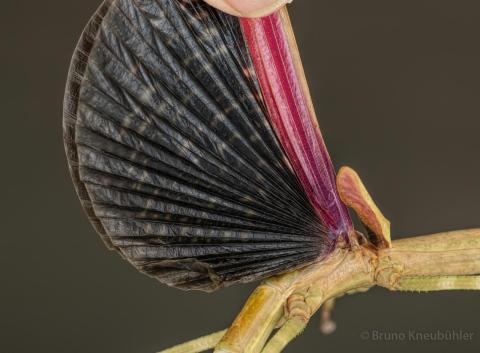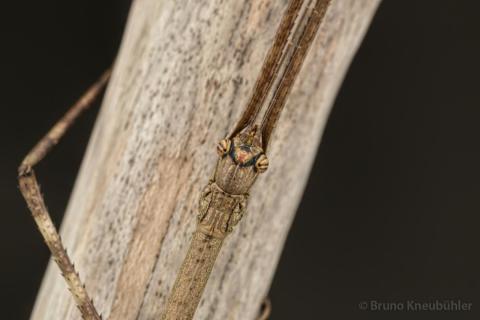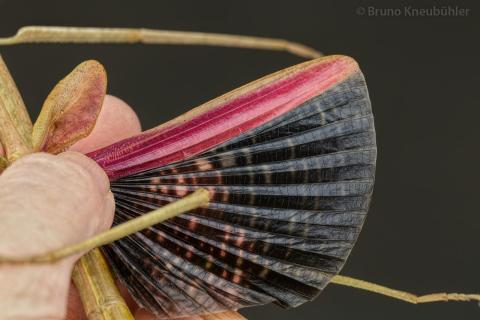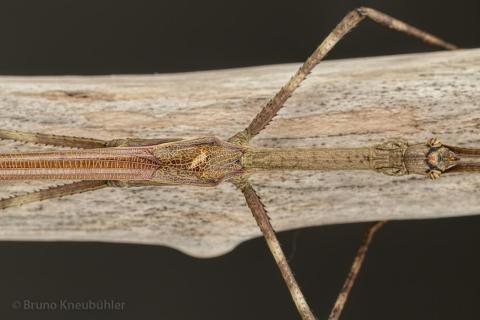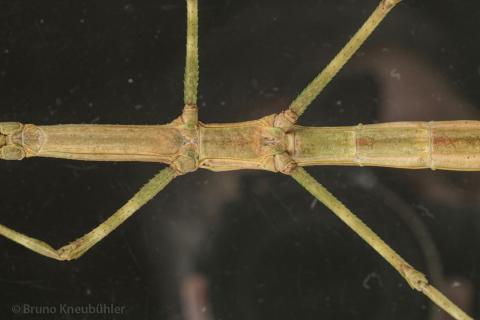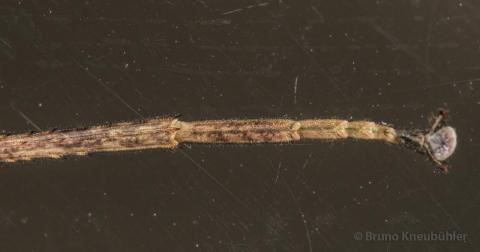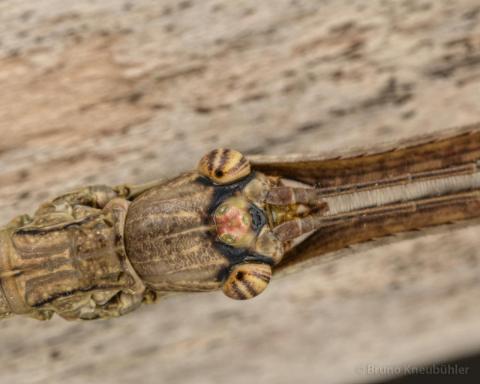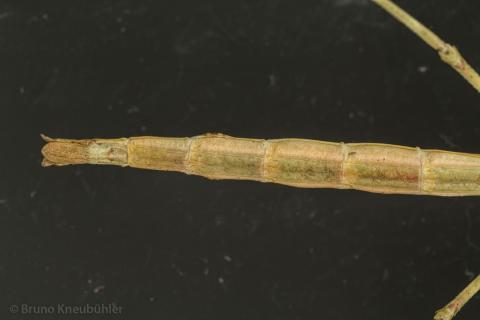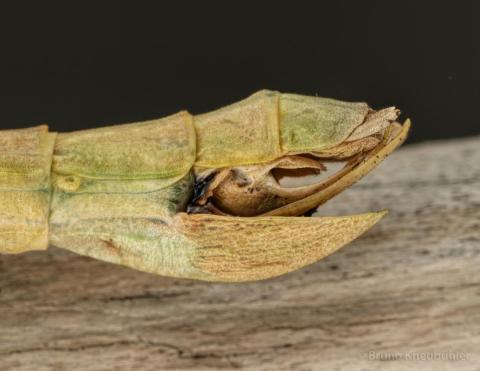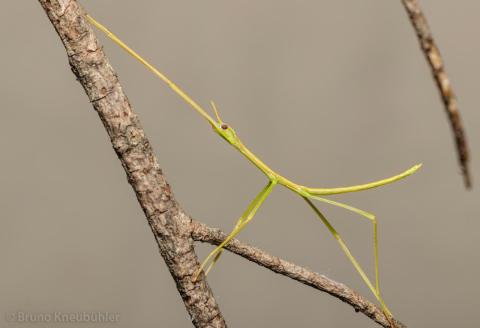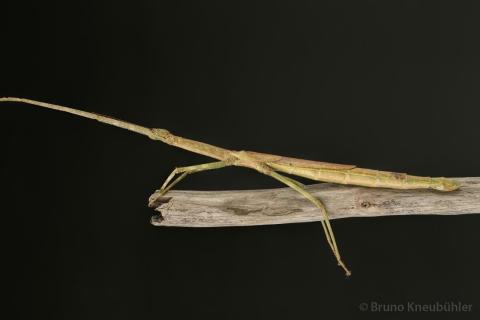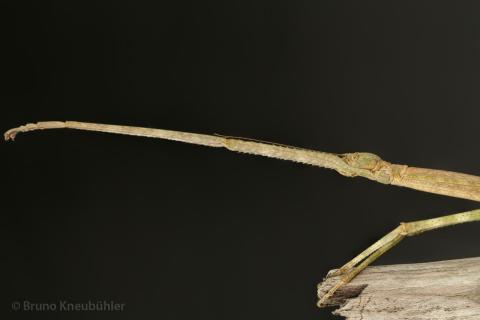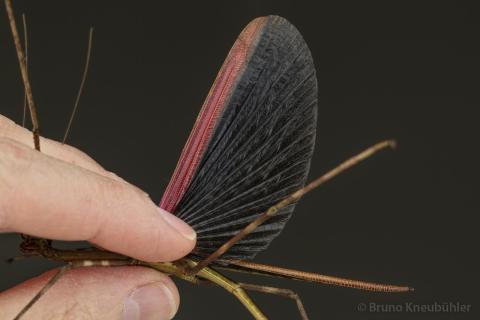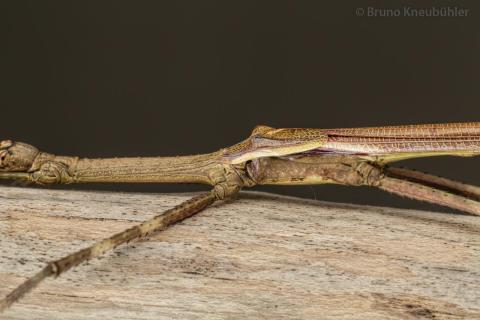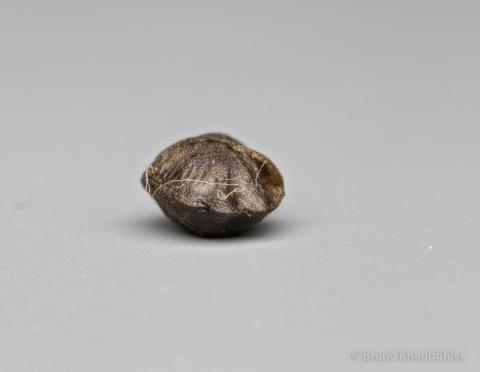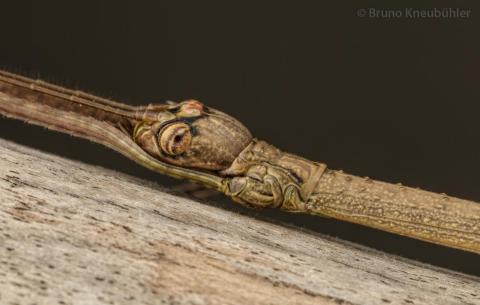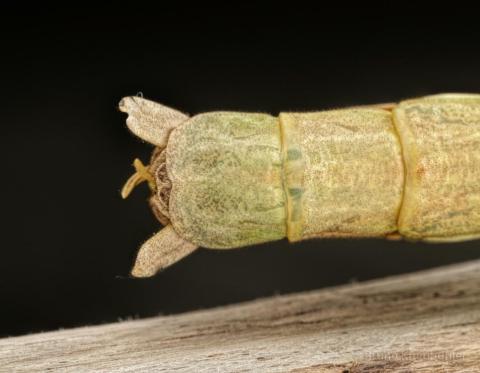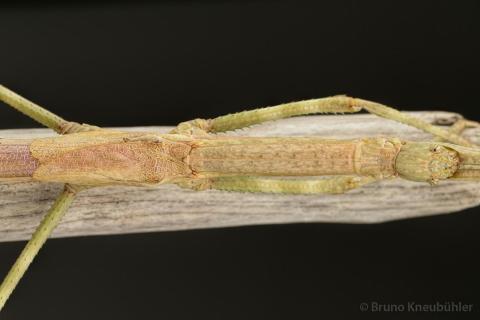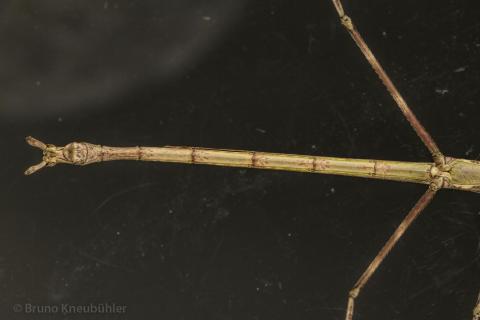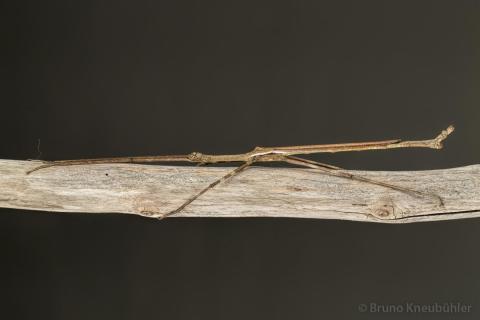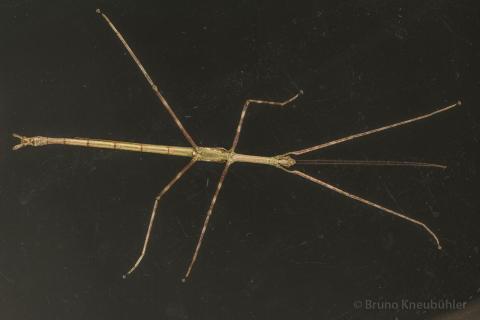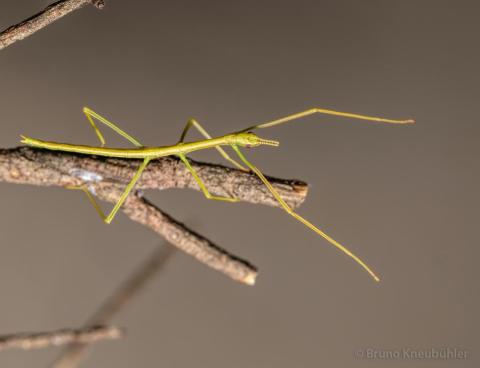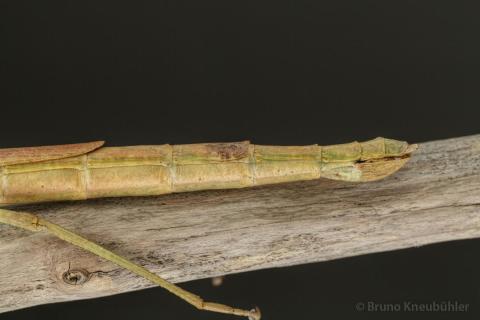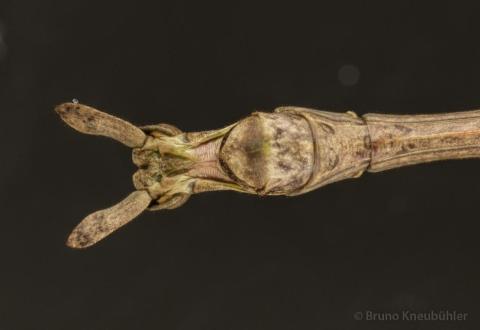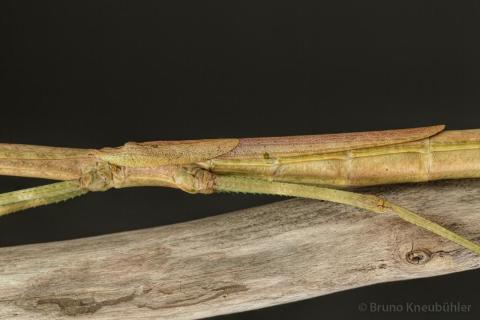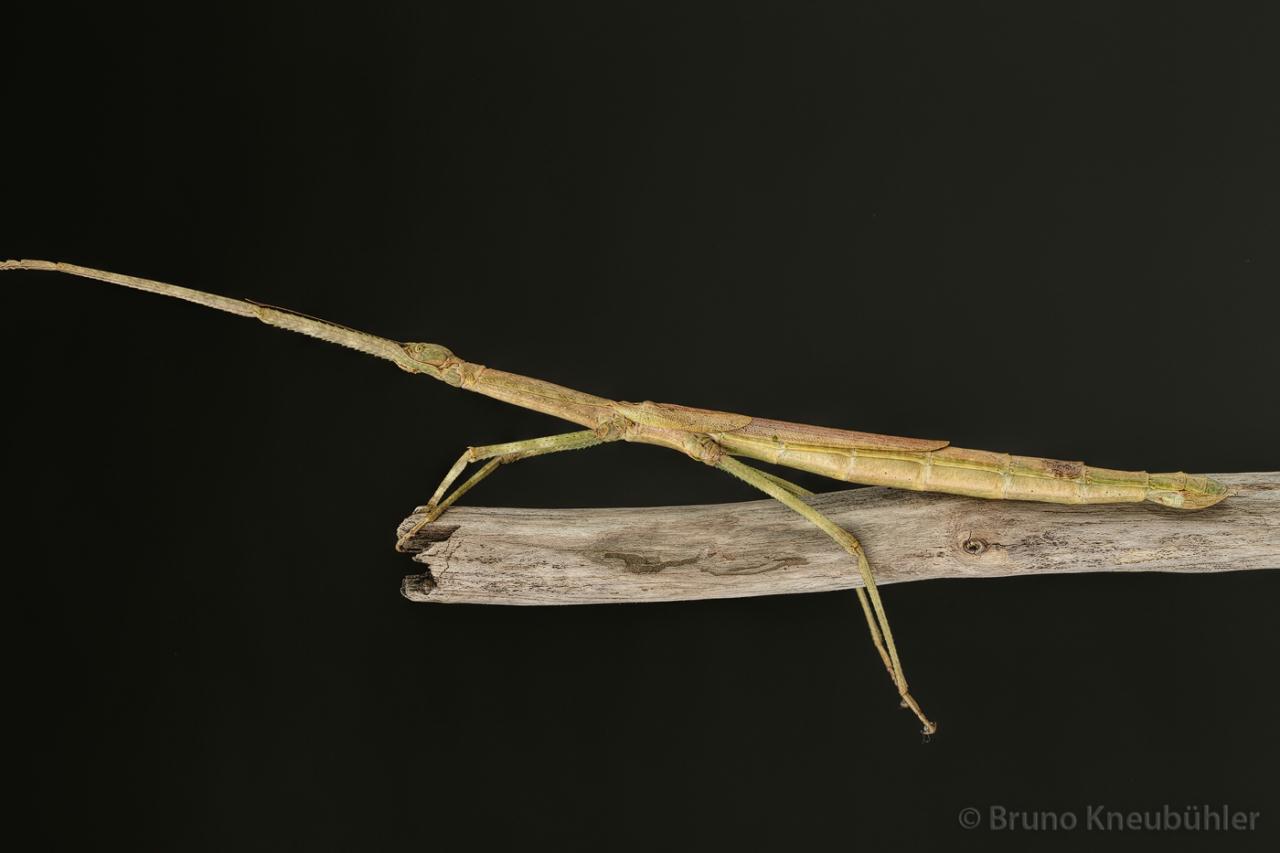
Genus
Species
Stock
CLP
631
PSG
20c
Culture status
Unknown
Foodplants
Bramble (Rubus spp.)
Beech (Fagus sylvatica)
Breeding notes
General Notes
- identification by Frank Hennemann (2013)
- Oliver described this species in 1792 as Mantis maculata, the type material is from Ambon island (a small island near Seram)
- Synonyms: Cyphocrana maculata (Seville, 1831), Platycrana maculata (Gray, G.R. 1835), Platycrania maculata (Burmeister, 1840), Cyphocrania maculata (Westwood, 1859)
- further taxonomical informations → Phasmida Species Files
- Etymology
- Anchiale (or Anhkiale) is in greek mythology the Titan goddess of the warmth of fire, and the wife of Hekateros
- maculata from latin = stained, spotted
- there are (or have been) other Anchiale maculata culture stocks from different indonesian islands in culture:
- A. maculata „Seram“
- A. maculata „Bacan“
- Although these different culture stocks look rather similar, still they should be kept strictly seperat. They originate from different islands, and thus these populations are most probably genetically seperated since many thousands of years
_________________
Culture History
- 2014 - first successful culture by Bruno Kneubuehler
- 2014 – distributed to other breeders as Anchiale maculata „Galela“
_________________
Origin
- Galela (Halmahera, Indonesia)
_________________
Females
- bulky, big and winged phasmids
- body length about 17 – 18.5 cm
- coloration is greenish-brown to light-brown
- striped eyes
- distinct ocelli (simple eyes) on the head, inbetween the compound eye
- legs with many spines
- hindwings reach to the 5th abdominal segment
- costal region of hindwings is reddish-brown (outside) and bright scarlet (inside)
- antennae much shorter than forelegs
- subgenital plate about as long as the abdominal ending
- broad cerci
_________________
Males
- rather gracile, winged phasmids
- body length about 10 – 12 cm
- coloration is very consistent amongst males
- mainly different shades of brown
- dark mask around the striped eyes
- distinct, usually red-rimmed ocelli (simple eyes) on the head, inbetween the compound eye
- antennae shorter than forelegs
- hindwigs reach to the 5th abdominal segment
- costal region of hindwings is reddish-brown (outside) and scarlet (inside)
- long and broad cerci
_________________
Nymphs
- lenght (L1) about 23 mm
- yellow-green (dorsally), green (ventrally)
- short antennae
- dark eyes
- by L2 it is quite easy to draw a distinction between ♀♂ (by the naked eye)
_________________
Eggs
- about 3.5 x 4.5 mm
- brown
- irregularly shaped
- coarse, slilghtly glossy surface
- distinct capitulum present on the operculum (lid)
- micropylar plate long, narrow and barely visible
_________________
Food Plants
- it is very much recommendede to cut away the edges of the leaves for nymphs in L1
- regularly change the plants and the water in which they stand
- bramble (Rubus spp.)
is very well accepted by nymphs and adults - beech (Fagus sylvatica)
is very well accepted by adults (not tested with nymphs)
_________________
Behaviour
- nymphs as well as adult are passive during the day and out and about feeding at night
- nymphs and adults (especially adult males) can react rather frantically when they feel threatened (like when they are touched). They drop down, wriggle about and freeze again after a few steps
- adult males can fly for a short distance
- matings occur often during the night
- a defensive spray was not observed
- females fling the eggs away - with a swing of the abodmen
_________________
Developement
- incubation time (HH-incubation on slightly damp sand at 20 - 23 °C) is about 4 – 5 months
- please note, that for phasmids it is not uncommon that some nymphs hatch a few or many months after the first nymphs hatched
- spread some moss over the eggs - this will make it much easier for the nymphs to hatch unscathed and it also reduces mould growth to some extend
- hatching ratio was very high (> 50%)
- males will be adult after about 3.5 months (at 20 – 23°C), females after about 3.5 – 4 months
- females start laying eggs after about 2 – 3 weeks
- about 20 – 25 eggs per female and week
- adults can live for several months
_________________
Breeding Notes
- my general notes on how to breed phasmids are an integral part of this care sheet …
- it is recommend to keep this species in a seperate cage. The culture is much more likely to be successful in a spacious cage, than in an multi-species, overcrowded cage
- degree of difficulty = 2 (1= very easy / 5 = very difficult)
- as freshly hatched nymphs are already quite big, therefore the incubation container must be big enough too
- keep nymphs seperate from the adults. This makes it much easier to monitor their developement and they are protected from being disturbed or even harmed by the much bigger adults (like during their moults)
- keep the nymphs in a cage with good ventilation, but take care that the humidity does not drop too low
- a constantly wet paper towel on the floor of the cage helps raising humidity
- a humidity level of about 60+ % rH (for adults) and 75+ % rH (for nymphs) seems to be fine
- nymphs can be kept in a Faunabox (or similar cages like Faunarium)
- move nymphs to a bigger cage as they grow bigger
- a cage of at least 30 x 30 x 60 cm height should be provided for 2 – 3 adult couples
- at least 2 (-3) cages are needed to breed this species – one cage for the small nymph, maybe another one for the older nymphs and one cage for the adults
- spray smaller nymphs with water 2 – 3 times a week (do not used chlorinated tap water). This water should dry up within a few hours, therefore an airy cage is needed
- it is not needed to spray older nymphs and adults
- make sure that nymphs, which are about to undergo their adult moult, do not find places in the cage which would not offer them enough space beneath to moult successfully
_________________
References
- Phasmida Species Files (www.phasmida.orthoptera.org)
